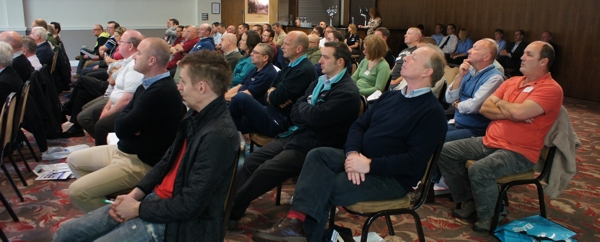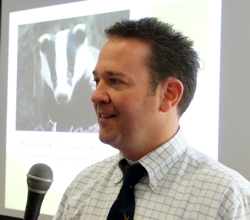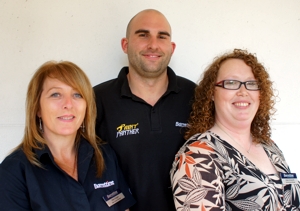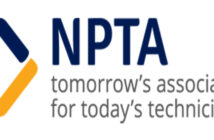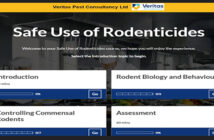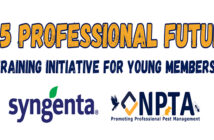There is nothing better than a controversial topic or two to get an event going and the joint Barrettine/Pest publications day at the Hellerby Hotel, Rotherham, on Wednesday 3 October, didnt disappoint.
Dr Rodney Calvert from Natural England was expecting his session on Badgers & legislation; a licensing perspective to generate some controversy and it duly did. A number of delegates questioned why it was that badgers had their own Protection of Badgers Act 1992 which resulted in the need for time consuming licensing and incredibly expensive measures to protect people’s gardens and property from badger damage.
|
However as Rodney pointed out the Act was brought in to deal with a badger baiting problem and whilst it is debatable whether the legislation has had much impact on that problem, we are where we are. “No politician is going to suggest the Act is repealed. It’s a matter of public acceptability,” he said. Proving to be even more controversial however, was the session by Claire Hazell from Bayer who outlined the 35-day rule and the impact it is likely to have on anticoagulant rodenticide use. So what is the 35 day rule and why did it upset so many of the pest controllers in the audience? Claire explained that whilst it is not in force yet all the signs are that HSE will require all anticoagulant rodenticide labels to include some text which effectively says that a baiting campaign should not last for more than 35 days. This will therefore outlaw the practice of permanent baiting. Pest controllers in the audience could see many problems with this, not least that many of their customers specify permanent baiting as part of their contracts. Concerns were also raised about the consumer market where professionals would be prevented from permanent baiting but consumers would still be allowed to buy bait and leave it down as long as they wanted to and often in the most unsuitable places. Others really couldn’t see why, if permanent bating had been working for years it needed to be stopped now. |
|
|
|
Claire tried to explain that there will be a simple way for pest controllers to deal with the 35 day rule just by keeping records. She said that if after 35 days you re-assess the situation and can show that there are good reasons why bait is still needed, for example there is immigration from a neighbouring site, then you can continue baiting but you must document your assessment and date it and maybe even get the customer to sign it as well. You can read more about this topic in the article on permanent baiting in the May & June Issue of Pest . Much less controversial was the session by Dr Richard Naylor from the Bed Bug Foundation who gave delegates a whistle stop tour of some recent bed bug research work from around the world. One particularly promising piece of work was the use of enthopathgenic fungi as a biological control for bed bugs. Basically the scientists have found a fungus which infects and kills bed bugs. They have tested this and discovered that not only does it kill the bed bugs they infect but it is also spread by the infected bed bugs to other bed bugs, resulting in a 100% kill in a few days. Richard described this as a ‘really cool’ piece of research as one of the main problems in controlling bed bugs is finding all the harbourages. Using this technique means you don’t have to find the harbourages because the infected bed bugs will find them for you. No doubt there will need to be a lot more work done on this before any biological control products come onto the market but watch this space! The format for the day, which involved a series of short ten minute ‘marketplace’ presentations interspersed between the longer papers, worked well. These shorter sessions included Gavin Wood from BASF, who presented some interesting field trial data on the impact of the company’s Fortrec formulation technology. This showed how rat control with a difenacoum cut wheat bait can be speeded up by improving the palatability of the bait and so encouraging the rats to eat more at each visit to the bait station. Basically Fortrec works by adding grain to the bait which is sufficiently different from the bulk of the bait in size, shape, colour, smell, taste and texture to appeal more completely to all the rodent senses involved in natural feeding behaviour. As Gavin said: “Neosorexa Gold with Fortec technology is gourmet food for rats.” Brady Hudson from Bell Laboratories introduced two new bait boxes in the Protecta Evo range. The Evo Ambush and the Evo Circuit join the Evo Express introduced earlier in the year. The Ambush is a low profile design but with sufficient space for a trap if required. The Circuit is cleverly disguised to look like an electrical box but what really sets these boxes apart are their tamper proof designs. Brady showed a video of the testing which has to be done in the USA for any box which is to be used in a domestic situation. It showed a pitbull dog playing with a competitor’s box which it quickly managed to get into and then the same dog with an Evo box. Even after two hours the dog had still not managed to get into the box. As Brady said: “Bell is the only manufacturer that claims tamper resistant status and has the tests to prove it.” The third of these ‘marketplace’ presentations was by Alan Morris of Bayer who emphasised the importance of stewardship. Bayer launched its new Rodlion range of rodenticides last year and has now produced a useful user guide and record book. He encouraged delegates to pick up a copy of the booklet which outlines best practice and provides a useful section to allow users to map specific baiting points and log baiting programmes. “It is also a useful tool to help pest controllers educate their customers,” he said. The day also included a short session updating delegates on the work of RAMPS UK- the Register of accredited Metallic Phosphide Standards in the UK and a review of the joint BASF/Pest National UK Pest Management Survey by Pest’s own associate editor Helen Riby. The final presentation was from Barrettine’s Helen Ainsworth with some useful tips on what to do in an emergency and some the simple steps that pest controllers can take to protect their health at work. This excellent event was sponsored by BASF, Bayer, Bell, Rentokil and Suterra.
|
||

